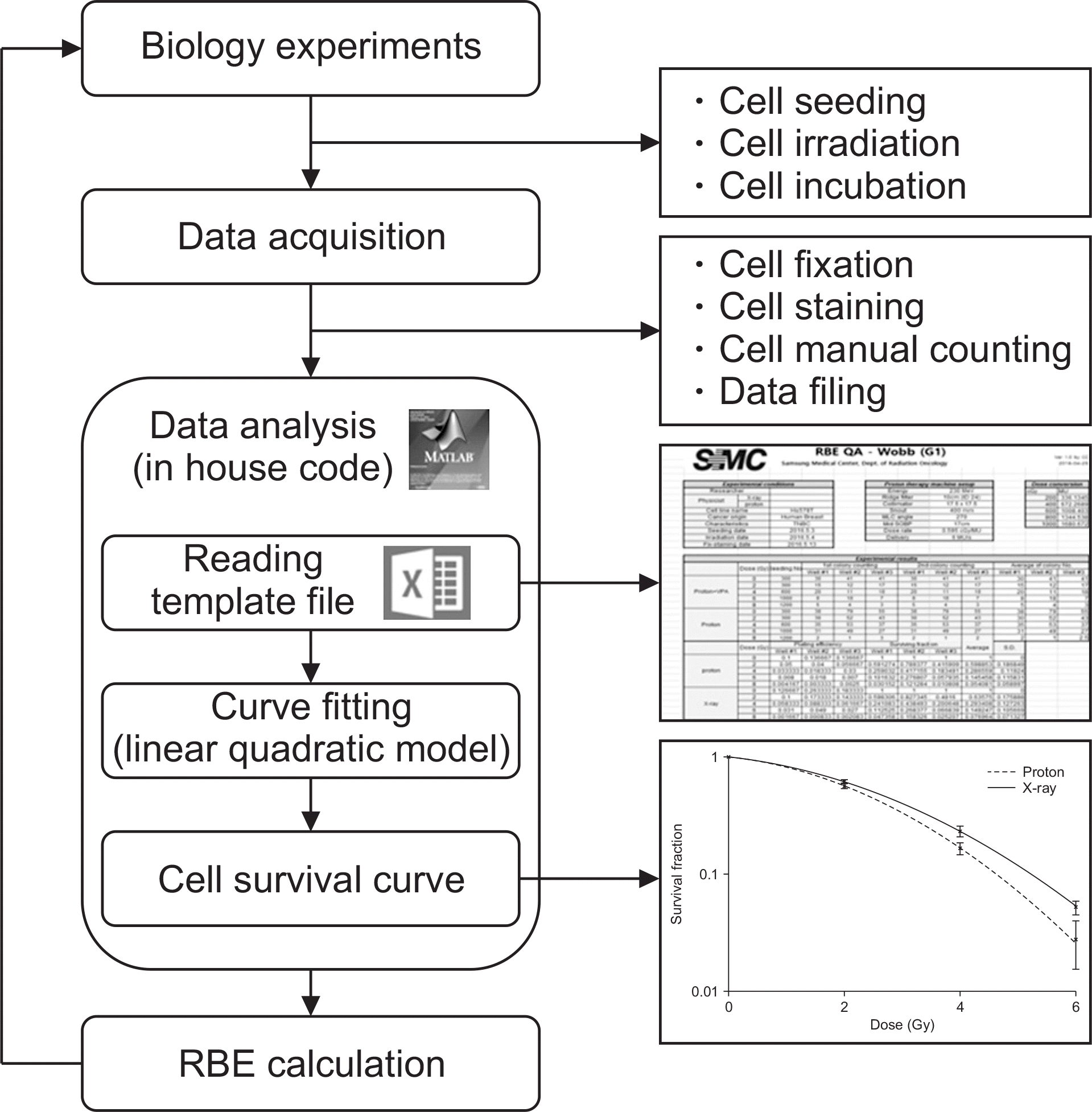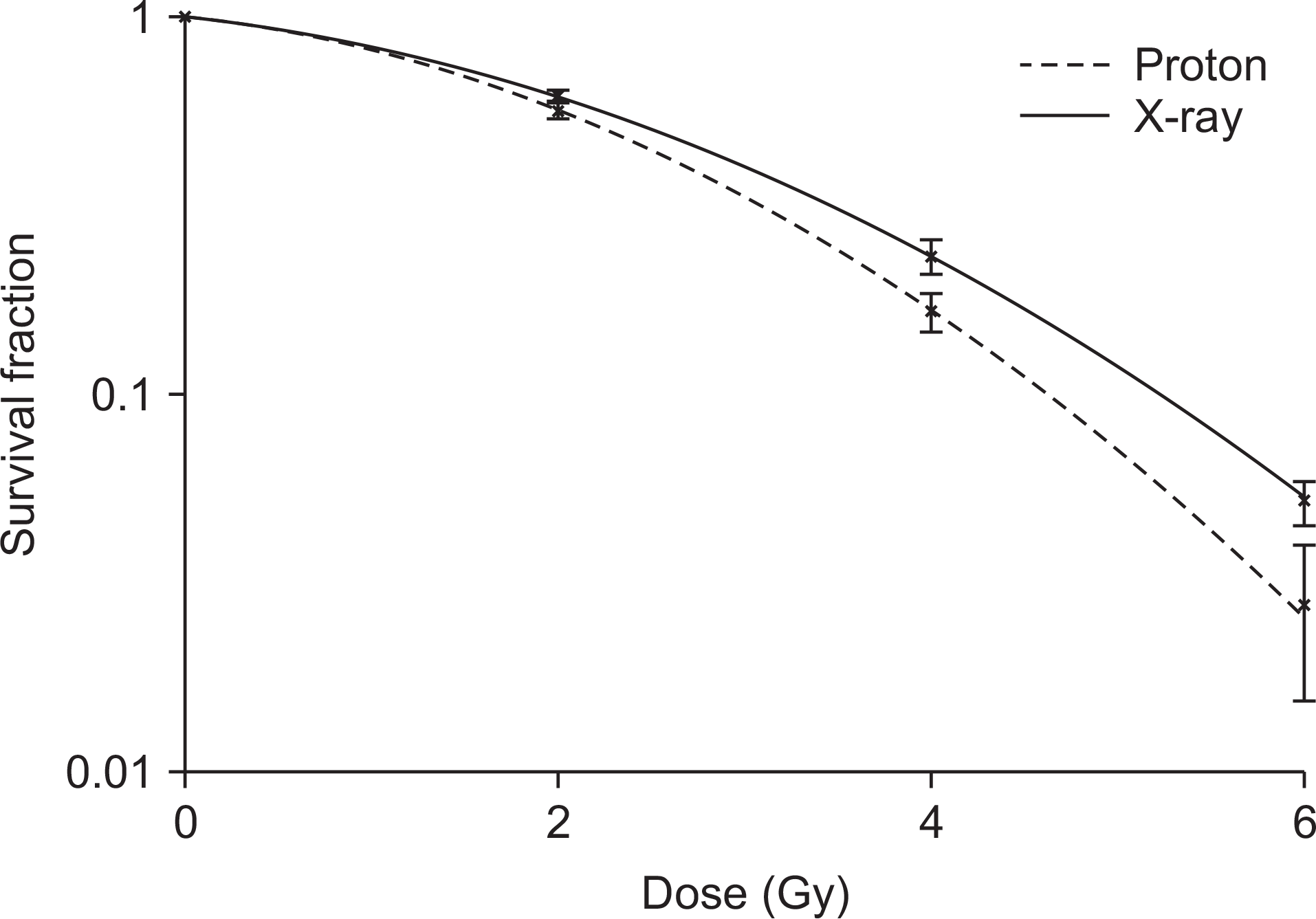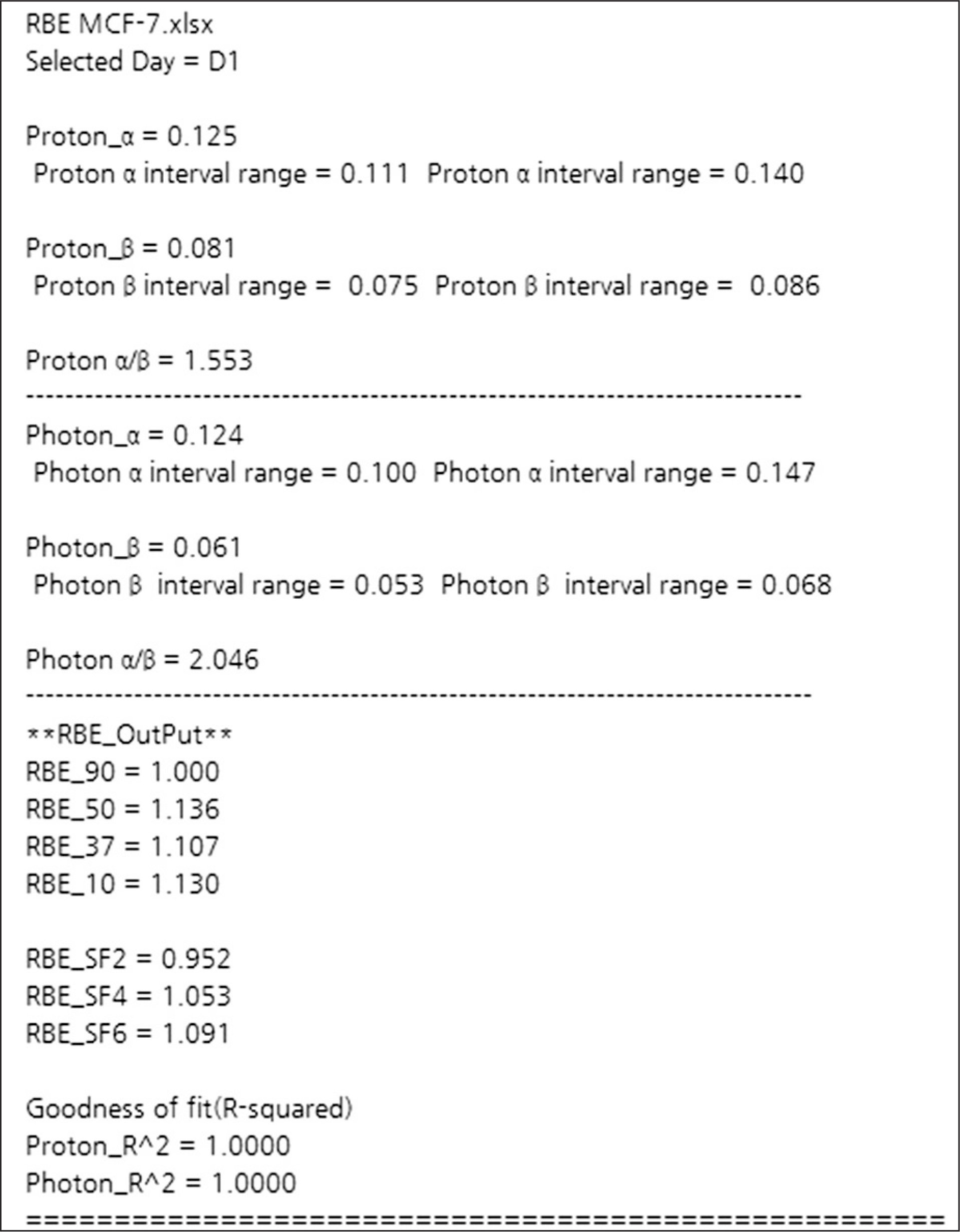Abstract
Relative biological effectiveness (RBE) of particle beam needs to be evaluated at particle beam therapy centers before the clinical application of the particle beam. However, since RBE analysis is implemented manually, it is useful to have a tool that can easily and effectively handle the data of experiments to generate cell survival curve and to analyze RBE simultaneously. In this work, the development of a program for RBE analysis of particle beam therapy was presented. This RBE analysis program was developed to include two parts; fitting the cell survival curves to linear-quadratic model and calculating the RBE values at a certain endpoint using fitting results. This program was also developed to simultaneously compare and analyze the template results that stored experiment data with photon and particle beam irradiations. The results of the cell survival curve obtained by each irradiation can be analyzed by the user on a desired data after reading the template stored in the easy-to-use excel file. The analysis results include the cell survival curves with error range, which are appeared in the screen and the α and β parameters of linear-quadratic model with 95% confidence intervals, RBE values, and R2 values to evaluate goodness-of-fit of survival curves to model, which are stored in a text cvs file. This software can generate cell survival curve, fit to model, and calculate RBE all at once with raw experiment data, so it helps users to save time for data handling and to reduce the possibility of making error on analysis. As a coming plan, we will create a user-friendly graphical user interface to present the results more intuitively.
REFERENCES
1. Choi J, Kang JO. Basics of particle therapy II: relative biological effectiveness. Radiat Oncol J. 2012; 30:1–13.

2. Fokas E, Kraft G, An H, Engenhart-Cabillic R. Ion beam radiobiology and cancer: time to update ourselves. Biochim Biophys Acta. 2009; 1796:216–29.

3. Ando K, Furusawa Y, Suzuki M, Nojima K, Majima H, Koike S, et al. Relative biological effectiveness of the 235 MeV proton beams at the National Cancer Center Hospital East. J Radia Res. 2001; 42:79–89.

4. Butterworth KT, McGarry CK, Clasie B, Carabe-Fernandez A, Schuemann J, Depauw N, et al. Relative biological effectiveness (RBE) and out-of-field cell survival responses to passive scattering and pencil beam scanning proton beam deliveries. Phys Med Biol. 2012; 57:6671–80.

5. Grun R, Friedrich T, Kramer M, Scholz M. Systematics of relative biological effectiveness measurements for proton radiation along the spread out Bragg peak: experimental validation of the local effect model. Phys Med Biol. 2017; 62:890–908.
6. Girdhani S, Sachs R, Hlatky L. Biological effects of proton radiation: what we know and don't know. Radiat Res. 2013; 179:257–72.

7. Paganetti H. Relative biological effectiveness (RBE) values for proton beam therapy. Variations as a function of biological endpoint, dose, and linear energy transfer. Phys Med Biol. 2014; 59:R419–72.

8. McNamara AL, Schuemann J, Paganetti H. A phenomenological relative biological effectiveness (RBE) model for proton therapy based on all published in vitro cell survival data. Phys Med Biol. 2015; 60:8399–416.
9. Inaniwa T, Furukawa T, Kase Y, Matsufuji N, Toshito T, Matsumoto Y, et al. Treatment planning for a scanned carbon beam with a modified microdosimetric kinetic model. Phys Med Biol. 2010; 55:6721–37.

10. Saager M, Glowa C, Peschke P, Brons S, Grün R, Scholz M, et al. The relative biological effectiveness of carbon ion irradiations of the rat spinal cord increases linearly with LET up to 99 keV/mum. Acta Oncol. 2016; 55:1512–5.
11. Hall EJ, Giaccia AJ. Radiobiology for the radiologist. 7th ed.Philadelphia: Lippincott Williams & Wilkins;2012.
Table 1.
Fitting coefficients (α and β) for the linear-quadratic model and goodness-of-fit (R2) from RBE analysis program (N) and commercial graphing software (E) for example cases.




 PDF
PDF ePub
ePub Citation
Citation Print
Print





 XML Download
XML Download